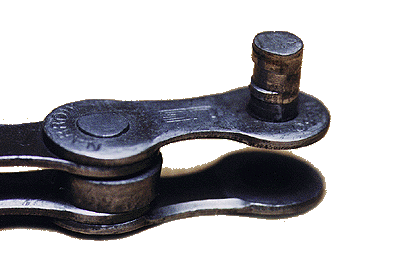1) The drive side crank arm, which includes the crank arm, the spider, the chainrings, and the crank's axle:
2) The non-drive side crank arm
3) The non-drive side crank arm cap
This nice Ultegra crank is purely for illustration of the 3 major parts

There are any number of nuances to selecting the appropriate bottom bracket, crankset, frame combination. I won't go into any of those here, these instructions assume that you have a frame with an appropriately sized bottom bracket to fit a Shimano crank. If you can't guarantee that, do more homework or ask.
First, apply grease to the axle of the crank where is will rest against the bottom bracket bearings. By grease, I don't mean Vaseline, find a good quality bicycle grease (I've been using Finishline Teflon grease for just about everything and haven't had any problems yet, but the world is filled with people who are extraordinarily picky about the type of grease they use...):
Next, push the axle though the drive side of the bottom bracket:
When that happens, there's no replacement for a rubber mallet and a little whack:
When the drive side is completely in, there shouldn't be and axle showing between the bottom bracket and the inside of the chainring spider:
The axle will now be sticking out the non-drive side of the bottom bracket. Add some grease to both the inside and outside. I like grease any time there is metal on metal contact, it makes the bike a lot less squeaky and helps prevent premature wear.
Slide on the non-drive side crank arm. You'll notice a little tab that is popped up in between the pinch bolts. This little tab wraps around the edge of the axle to ensure that the arm is on fully.
When the arm is on, push the tab down. Don't force it, if it doesn't go down easily, then the non-drive side arm isn't on. This means either that the axle isn't pushed all the way through the bottom bracket, of the non-drive side arm just isn't fully seated. Check both.
Next, prepare the non-drive side arm cap. There's a cool little tool that I have, you'll need some version of the same thing. Grease the threads lightly.
Tighten the cap FINGER TIGHT ONLY! This cap only helps to make sure the crank arm has compression when tightening the pinch screws, it's not load bearing and is only plastic.
Next, tighten the two pinch screws. Alternate sides as you go to ensure that the force is evenly distributed. I believe that his crank 12-15 Nm.
To remove, reverse this process. Popping up the little tab between the pinch bolts is a pain and you might need the mallet to pop the crank out just like you might need it to pop it in.
If the crank you're putting in has different numbers of teeth on the chainrings than the crank you're removing, it's necessary to adjust the length of the chain in order to get proper shifting performance in the whole gear range. If you don't change it, you'll suffer in both the high-high and low-low areas of shifting.
More on that tomorrow...















